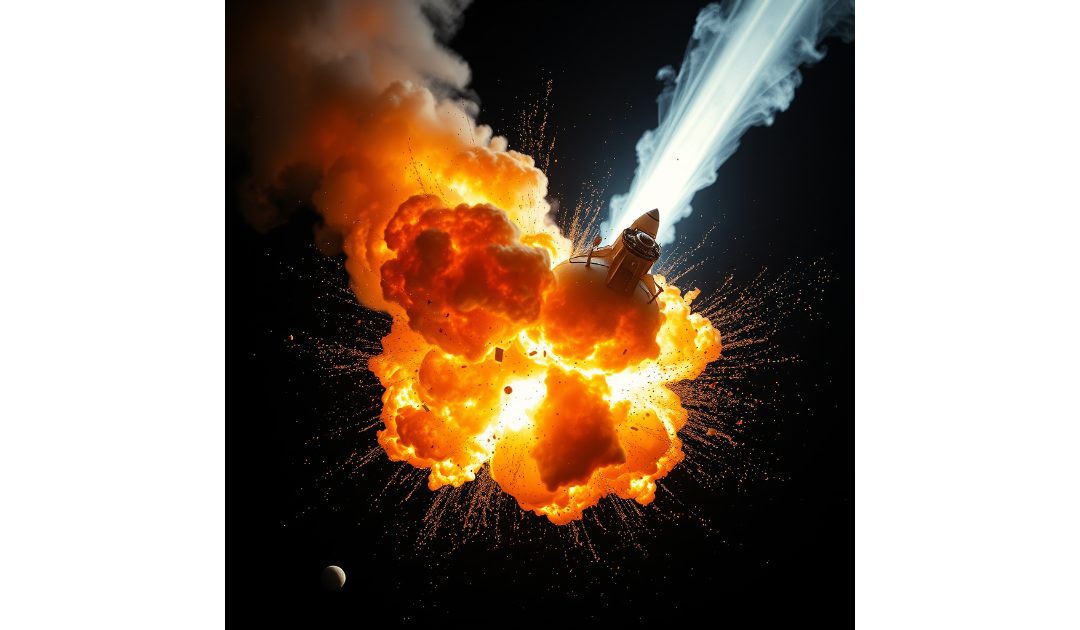Either ironically or spookily it was on the 13th of April, 1970, that an oxygen tank exploded on Apollo 13. The Apollo 13 mission, launched on the 11th of April, 1970, was the seventh crewed mission in NASA‘s Apollo space programme and the third intended to land on the Moon. It became known as a “successful failure” due to the incredible efforts of the astronauts and ground crews to bring the mission back from the brink of disaster.
The mission was crewed by Commander James A. Lovell, Command Module Pilot John L. Swigert, and Lunar Module Pilot Fred W. Haise. The primary objectives of Apollo 13 were to explore the Fra Mauro formation, which was believed to be composed of material ejected during the impact that formed the Imbrium Basin, one of the vast lava plains on the Moon’s surface.
The launch proceeded smoothly, with the Saturn V rocket performing flawlessly. However, two days into the mission, on April 13, 1970, as the spacecraft neared the Moon, disaster struck. One of the oxygen tanks in the Service Module exploded due to a fault. This was a catastrophic failure, as the oxygen tanks were crucial for life support, electricity generation, and water production. With the Command Module’s normal supply of oxygen and electrical power disrupted, the mission to land on the moon was immediately aborted.
The explosion also damaged the spacecraft’s Service Module and left the three astronauts with limited resources in the Command Module. In response, NASA’s Mission Control in Houston immediately began devising a plan to safely return the astronauts to Earth. This involved using the Lunar Module as a “lifeboat” as it had its own independent life support system, oxygen, and power supplies.
The Lunar Module, meant to be discarded after landing on the Moon, became crucial for survival. It provided the astronauts with sufficient power, oxygen, and water to sustain them for the journey back to Earth. However, the Lunar Module was designed to support two astronauts for two days, not three astronauts for four days. This required precise rationing of power and water, and the astronauts had to survive in freezing conditions as they shut down non-essential systems to conserve resources.
A key part of the return strategy involved using the Moon’s gravity to slingshot the spacecraft back toward Earth. This trajectory adjustment was performed using the Lunar Module’s descent engine. Despite the impaired conditions, the crew executed the burns with exceptional accuracy, ensuring they were on the right path.
Communication with Mission Control was vital, and the team on the ground worked around the clock to solve a myriad of problems, from carbon dioxide build-up in the spacecraft to limited battery power. A notable achievement was the creation of a makeshift carbon dioxide scrubber using duct tape, plastic bags, and other materials found on board, which successfully prevented the gas from reaching dangerous levels.
One of the most critical phases of the mission was re-entry into Earth’s atmosphere. The astronauts had to transfer back to the Command Module for re-entry, which had been powered down to conserve resources. There was concern about the heat shield’s integrity, potentially compromised by the explosion, but it held. After a tense final descent and a communications blackout during re-entry, the Command Module splashed down safely in the Pacific Ocean on the 17th of April, 1970.
The Apollo 13 mission is remembered not for its failure to land on the Moon, but for the exceptional teamwork, ingenuity, and determination that ensured the crew’s safe return. It demonstrated the resilience of the human spirit in the face of adversity and highlighted the importance of thorough training, preparation, and the ability to adapt to unforeseen circumstances.
The mission had a profound impact on the future of space exploration. It led to significant changes in safety protocols, hardware redesigns, and mission planning for future Apollo missions and beyond. The incident underscored the inherent risks of space travel and the need for robust contingency planning.
Apollo 13’s story of survival against the odds has been told through books, documentaries, and the critically acclaimed 1995 film “Apollo 13,” directed by Ron Howard and starring Tom Hanks as Jim Lovell.

